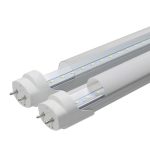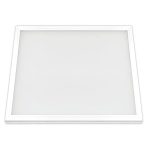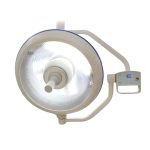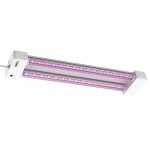Sleep Better Tonight: Discover the Best LED Light Color to Help You Drift Off Faster
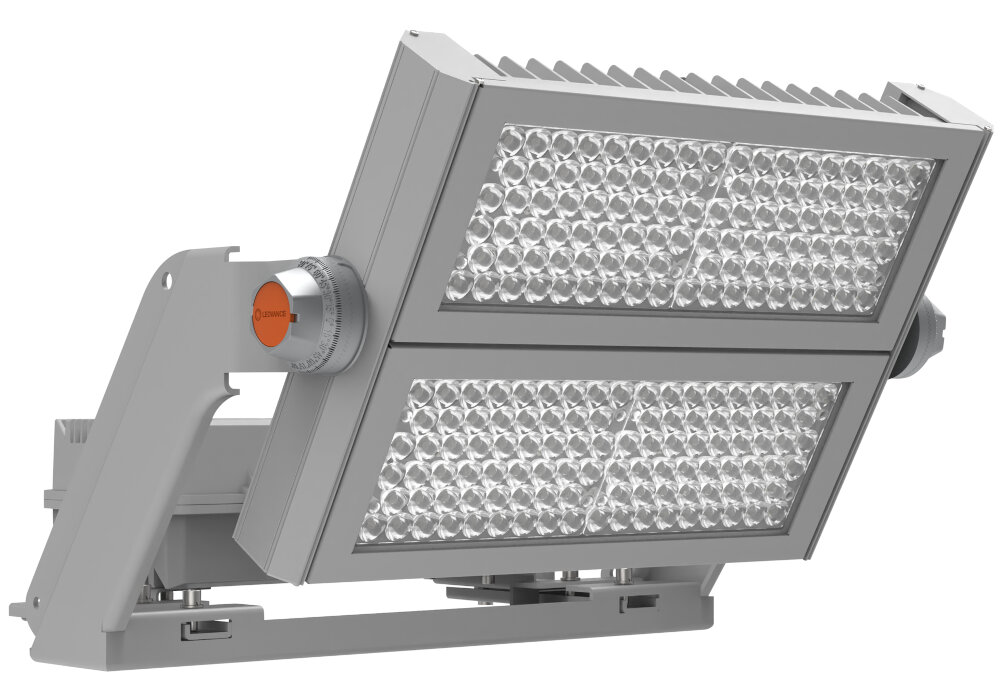
Sleep is essential for our overall health and well-being. However, with the demands of daily life, getting a good night’s sleep can be challenging. One factor that can affect the quality of our sleep is the color of the light in our environment. Research has shown that certain colors of light can have a significant impact on our sleep quality. In this article, we will explore the best LED light color to help you drift off faster and get the restful sleep you need. LED lights have become increasingly popular in recent years due to their energy efficiency and long lifespan. They are also available in a wide range of colors, each with its own unique benefits. While some may prefer a brighter or cooler light during the day, it is essential to switch to a more relaxing and soothing light in the evening to promote better sleep. By understanding which LED light colors are best for sleep, you can create a peaceful and calming environment that promotes relaxation and restful sleep. Read on to discover the best LED light color to help you drift off faster and wake up feeling refreshed.
LED lights, or Light Emitting Diodes, are a type of lighting technology that uses a semiconductor to convert electricity into light. They are energy efficient, long-lasting, and available in a wide range of colors and brightness levels. LED lights have become increasingly popular in recent years due to their low energy consumption and the variety of colors available, making them suitable for a range of applications, including home and commercial lighting, automotive lighting, and even medical devices. In the context of sleep, LED lights with a warm or red hue are preferred because they have been shown to promote relaxation and help people fall asleep faster.
Sleep is a crucial aspect of a healthy lifestyle, and getting enough quality sleep is integral to overall well-being. It is during sleep that our bodies repair and rejuvenate, and the lack of it can lead to a host of health problems, including obesity, diabetes, heart disease, and depression. Moreover, sleep plays a vital role in regulating our mood, cognitive abilities, and memory consolidation. Therefore, it is essential to cultivate good sleep habits, such as creating a conducive sleep environment, sticking to a regular sleep schedule, and avoiding stimulants like caffeine and electronics before bedtime. Additionally, choosing the right LED light color can also help in improving the quality and quantity of sleep.
The color of LED lights can significantly impact a person’s ability to fall asleep. Blue light, which is emitted by many electronic devices and certain LED bulbs, can interfere with the natural production of melatonin, a hormone that regulates sleep-wake cycles. Exposure to blue light before bedtime can make it more difficult to fall asleep and can lead to disrupted sleep patterns. In contrast, warmer colored LED lights, such as those with a yellow or orange hue, can promote relaxation and help prepare the body for sleep. By choosing the right LED light color, individuals can create a more sleep-friendly environment and improve their overall sleep quality.
Blue LED Lights

Blue LED lights have become increasingly popular over the years due to their various benefits. Blue light has the ability to suppress melatonin production, which is a hormone responsible for regulating our sleep-wake cycle. By suppressing melatonin production, blue LED lights can help us stay alert and awake during the day. This is why blue LED lights are commonly used in offices and other workplaces to promote productivity and focus. However, it is important to note that exposure to blue LED lights at night can have the opposite effect and negatively impact our sleep quality. This is because blue light can disrupt our natural circadian rhythm, making it harder for us to fall asleep and stay asleep. To combat this issue, many people have started using blue light blocking glasses or installing blue light filters on their electronic devices. Alternatively, some individuals choose to switch to warm-toned LED lights in the evening to promote relaxation and better sleep. While blue LED lights can be beneficial during the day, it is important to limit exposure to them at night to ensure a good night’s rest. Overall, blue LED lights can be a great tool for promoting productivity and focus during the day, but it is important to be mindful of their potential impact on our sleep quality.
Blue LED lights are a type of artificial lighting that emits a blue hue. These lights have become increasingly popular in recent years due to their energy efficiency and long lifespan. However, research shows that blue light exposure can negatively affect our sleep patterns, as it suppresses the production of melatonin, the hormone that regulates our sleep-wake cycles. This is because blue light, which is also emitted by electronic devices such as smartphones and laptops, mimics the natural daylight that tells our bodies to wake up. To avoid the negative effects of blue light on sleep, it is recommended to use warmer-colored lights, such as red or orange, in the evening and to limit exposure to blue light-emitting devices before bedtime.
Blue LED lights can have a negative impact on sleep as they suppress the production of melatonin, a hormone that regulates our sleep-wake cycle. Exposure to blue light before bed can trick our brains into thinking it’s still daytime, making it harder to fall asleep and stay asleep throughout the night. This is particularly problematic in today’s digital age, as many of us spend our evenings using electronic devices that emit blue light. To combat this issue, it’s recommended to limit screen time before bed or use a blue light filter on devices. Additionally, using warmer LED light colors, such as red or orange, can help promote relaxation and aid in falling asleep faster.
Research studies suggest that blue LED lights can disrupt our sleep patterns by suppressing the production of melatonin, a hormone that regulates sleep. A study conducted by the University of Basel in Switzerland found that exposure to blue LED lights before bedtime delayed the onset of sleep and reduced the amount of REM sleep, which is critical for memory consolidation and learning. Another study published in the journal Sleep Medicine found that participants who were exposed to blue LED lights experienced less restful sleep and were more prone to waking up during the night. These findings indicate that avoiding blue LED lights before bedtime may be crucial for improving the quality of our sleep and promoting a healthier sleep-wake cycle.
Red LED Lights
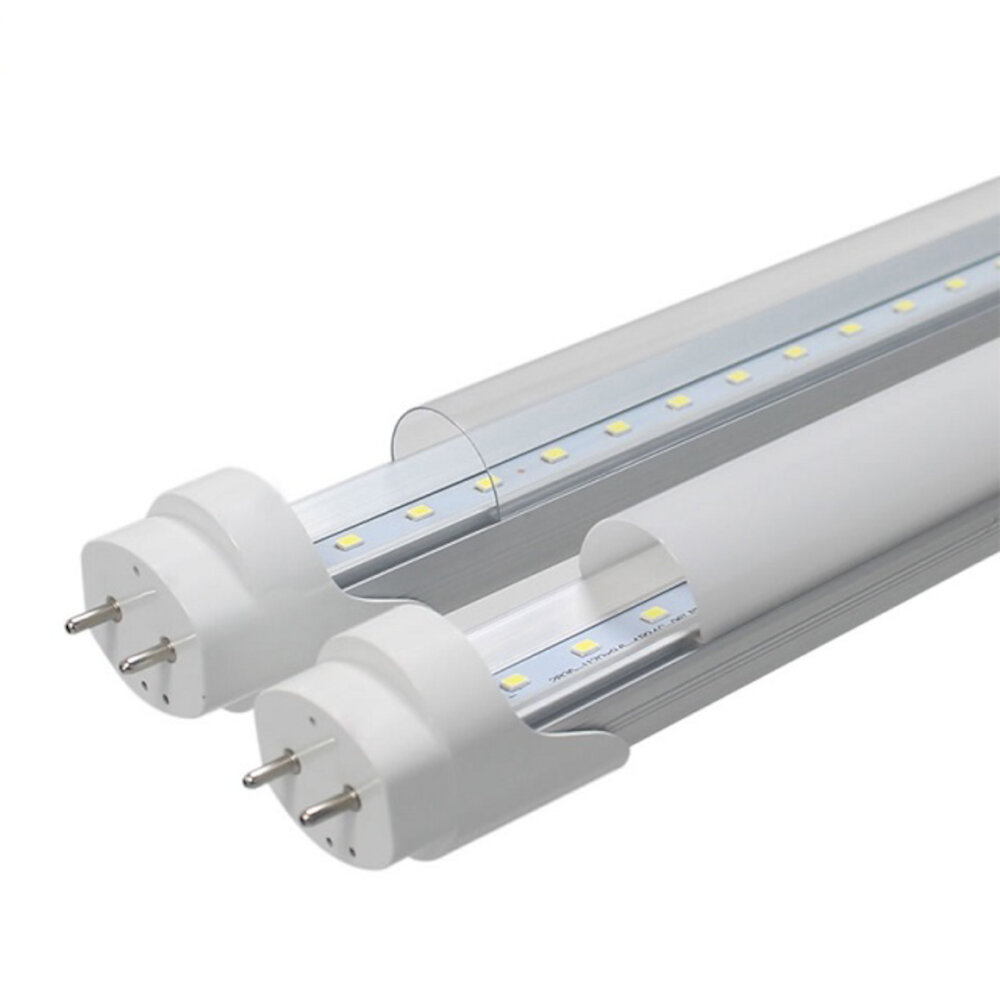
Red LED lights emit a warm and calming glow that can help you sleep better at night. These lights have a longer wavelength compared to other colors, which means they have a lower frequency and produce fewer blue light rays. Blue light, which is prevalent in electronic devices and some LED lights, can disrupt your natural sleep cycle by inhibiting the production of melatonin – the hormone that regulates sleep. Red LED lights, on the other hand, do not interfere with your body’s production of melatonin, making them an excellent choice for those who struggle to fall asleep at night. In addition to promoting better sleep, red LED lights have other benefits as well. They can help reduce anxiety and stress levels by creating a calming and relaxing environment. These lights are also ideal for use in the evening when you want to wind down after a long day. Whether you choose to install red LED lights in your bedroom, living room, or any other space in your home, you can rest easy knowing that you are taking steps to improve your overall health and well-being.
Red LED lights have been found to be the most conducive color for a good night’s sleep. This is because red light has the least impact on the body’s circadian rhythm, allowing the pineal gland to produce melatonin, the hormone that regulates sleep. Red light also has a calming effect on the mind, reducing stress and anxiety levels. Additionally, red light has been shown to improve the quality of REM sleep, the stage of sleep where dreaming occurs. Overall, incorporating red LED lights into your bedtime routine can greatly improve the quality and duration of your sleep, leading to a more restful and rejuvenating night’s rest.
Red LED lights have been found to have minimal impact on sleep due to their long wavelength and low color temperature. Unlike blue or white LED lights, which suppress the production of melatonin, a hormone that regulates sleep, red LED lights do not interfere with the body’s natural circadian rhythm. In fact, studies have shown that exposure to red light in the evening can help improve sleep quality, increase melatonin production, and promote relaxation. Red LED lights are also ideal for use in bedrooms as they create a warm and cozy atmosphere that can help calm the mind and prepare the body for sleep. So, if you’re looking for a sleep-friendly LED light color, red might just be the way to go.
Several research studies have found that red LED lights can improve sleep quality by promoting the production of melatonin, a hormone that regulates the sleep-wake cycle. A study published in the Journal of Athletic Training revealed that exposure to red LED lights for 30 minutes before bedtime significantly increased melatonin production and improved sleep quality in athletes. Another study published in the Journal of Clinical Sleep Medicine found that red LED lights in a bedroom environment improved sleep efficiency and reduced wakefulness after sleep onset. These findings suggest that incorporating red LED lights into your sleep routine may be an effective strategy to improve the quality of your sleep and help you drift off faster.
Yellow LED Lights
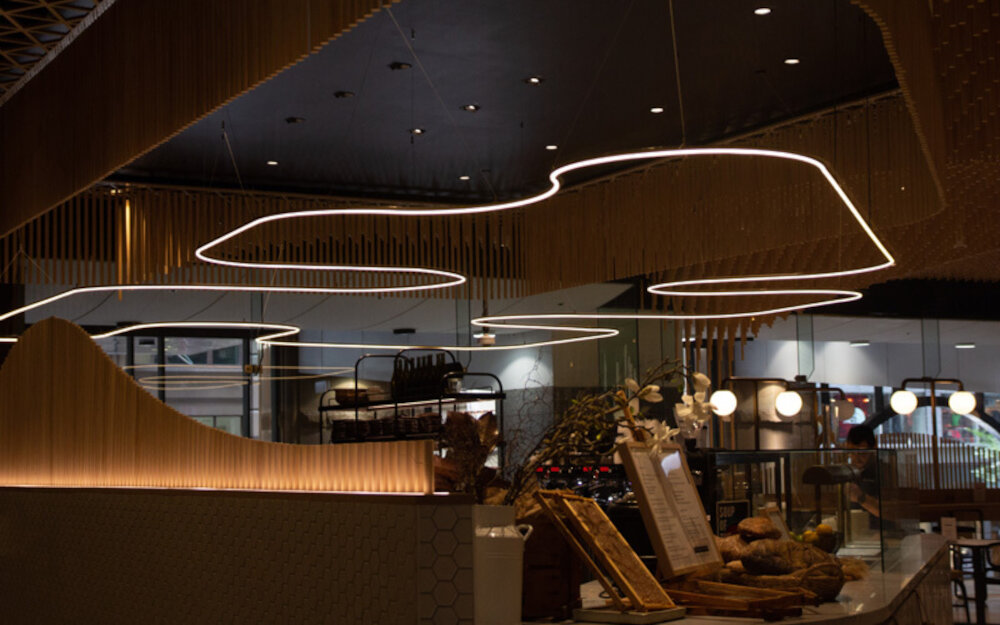
Yellow LED lights have gained popularity in recent years as an effective tool to improve sleep quality. The warm and calming glow of these lights creates a relaxing ambiance that soothes the mind and helps you drift off into a peaceful slumber. Unlike blue light, which is known to suppress melatonin production, yellow light has a minimal impact on the body’s natural sleep hormone, making it an ideal choice for bedtime illumination. Additionally, yellow LED lights are energy-efficient, long-lasting, and emit less heat than traditional incandescent bulbs, making them a practical and cost-effective option for people looking to improve their sleep environment. In addition to their sleep-enhancing benefits, yellow LED lights have also been used in therapeutic settings to alleviate symptoms of depression and anxiety. The warm and comforting glow of these lights can create a sense of well-being and relaxation, helping to reduce stress levels and promote a positive mood. Studies have shown that exposure to yellow light can increase the production of serotonin, a neurotransmitter that regulates mood and contributes to feelings of happiness and contentment. Whether used for sleep or mood improvement, yellow LED lights are a versatile and valuable addition to any home or workspace.
Yellow LED lights emit a warm and cozy glow that is reminiscent of a sunset or a cozy fire. They have a low color temperature, which means they produce less blue light than other types of LED lights. This makes them a great choice for creating a relaxing and calming atmosphere in your bedroom. Unlike blue light, which can suppress the production of melatonin, the hormone that regulates sleep, yellow light has been shown to have a positive effect on sleep quality. It can help you feel more relaxed and calm, making it easier to drift off to sleep. Yellow LED lights are also energy-efficient and long-lasting, so you can enjoy their benefits for years to come.
Yellow LED lights are known to have a positive impact on sleep quality due to their warm and relaxing tone. They emit a soft and calming light that helps to reduce stress and anxiety, promoting a peaceful and restful environment. Yellow light also stimulates the production of melatonin, a hormone that regulates sleep, making it easier to fall asleep and improving the overall quality of sleep. Unlike blue light, which is known to disrupt sleep patterns, yellow light has a minimal effect on circadian rhythms. By incorporating yellow LED lights into your bedroom routine, you can create a soothing and tranquil atmosphere that promotes better sleep and overall well-being.
Numerous research studies have investigated the impact of yellow LED lights on sleep quality. A study conducted by the University of Haifa found that exposure to yellow light for 30 minutes prior to sleep resulted in a significant increase in the production of melatonin, the hormone that regulates sleep-wake cycles. Another study published in the Journal of Environmental Psychology found that individuals who slept with yellow light had better sleep quality and reported feeling more rested and alert upon waking. Yellow light has also been found to have a calming effect on the mind and body, making it an ideal choice for creating a relaxing sleep environment. Overall, these studies suggest that incorporating yellow LED lights into your bedtime routine may help you drift off faster and enjoy a more restful night’s sleep.
Green LED Lights
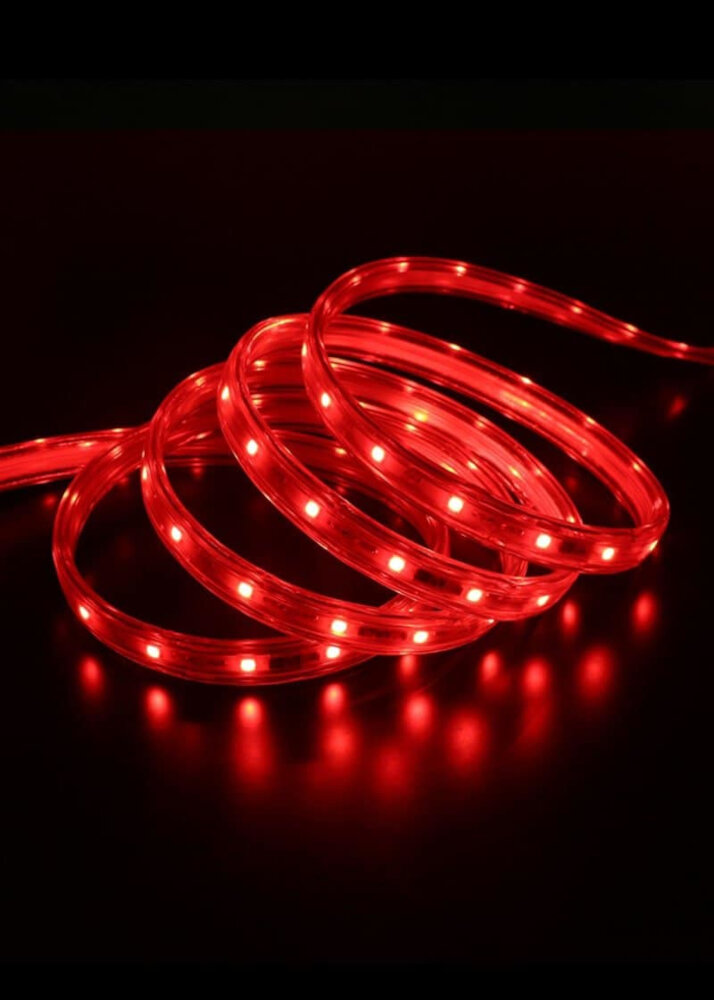
Green LED lights have become a popular choice for people who are looking for a soothing and calming light source to help them fall asleep faster. The green light spectrum has been shown to have a positive effect on the body’s natural circadian rhythm, which is responsible for regulating sleep-wake cycles. This is because green light has a shorter wavelength than other colors, which means it is less likely to disrupt the body’s natural production of melatonin, the sleep hormone. In addition, green LED lights are also believed to reduce anxiety and promote relaxation, making them an ideal choice for those who have trouble winding down at night. Another benefit of using green LED lights for sleep is that they have a lower impact on the environment compared to other types of light sources. LED lights are known for their energy efficiency, which means they use less energy compared to traditional incandescent bulbs. This not only saves money on energy bills but also reduces carbon emissions, making them a more sustainable choice for those who are environmentally conscious. Additionally, LED lights have a longer lifespan than traditional bulbs, which means they need to be replaced less frequently, further reducing their impact on the environment. Overall, choosing green LED lights for sleep not only benefits your health but also the planet.
Green LED lights emit a wavelength of approximately 525 nanometers, making them closer to the middle of the visible light spectrum. This characteristic makes green lights less disruptive to our natural melatonin production, which is responsible for regulating our sleep-wake cycles. Exposure to green light before bedtime has been shown to reduce the time it takes to fall asleep and improve overall sleep quality. Additionally, green light has a calming effect on the mind and body, making it an excellent choice for relaxation and stress relief before bedtime. Incorporating green LED lights into your nightly routine can help you achieve a more restful and rejuvenating sleep.
Green LED lights can have a significant impact on sleep quality. Studies show that exposure to green light can suppress the production of melatonin, a hormone that regulates sleep-wake cycles. While any artificial light can interfere with melatonin production, green light has been found to be particularly disruptive. This is because the photoreceptors in the eye that are most sensitive to green light also play a key role in regulating our internal clock. So, if you’re having trouble falling asleep or staying asleep, it’s best to avoid exposure to green LED lights, especially in the hours leading up to bedtime. Opting for warmer, more soothing colors like yellow or orange can help promote relaxation and improve sleep quality.
Research studies have shown that green LED lights have a positive effect on sleep. According to a study conducted by the University of Oxford, green light exposure before sleep increases drowsiness and leads to a deeper and longer sleep. Another study published in the Journal of Sleep Research found that green light exposure reduced the time it took for participants to fall asleep and increased their overall sleep quality. These findings are attributed to the fact that green light has a calming effect on the brain and reduces the production of the sleep-disrupting hormone cortisol. Therefore, incorporating green LED lights into your bedtime routine may be beneficial for a more restful and rejuvenating sleep experience.
The article \Sleep Better Tonight Discover the Best LED Light Color to Help You Drift Off Faster\ highlights the importance of choosing the right LED light color to improve sleep quality. The research findings indicate that blue light, which is commonly used in electronic devices, can disrupt melatonin production and delay sleep onset. In contrast, warmer colors, such as red and amber, are more conducive to relaxation and can help individuals fall asleep faster. Additionally, dimming the lights in the evening can further enhance the body’s natural production of melatonin, leading to a more restful night’s sleep. By adjusting the lighting in our homes, we can optimize our sleep patterns and improve our overall health and well-being.
If you’re struggling with falling asleep at night, the LED light color in your bedroom could be a major factor. Studies have shown that the best LED light color for sleep is a warm, soft yellow or amber hue. This type of light mimics the natural warm glow of a sunset and helps to relax the mind and body, signaling to your brain that it’s time to wind down for the night. In contrast, cooler blue or white LED lights can disrupt your body’s natural sleep cycle by suppressing the production of melatonin, a hormone that helps regulate sleep. By switching to a warm, amber LED light in your bedroom, you can create a calming and peaceful environment that promotes restful, rejuvenating sleep.
If you’re looking for a way to improve your sleep, consider switching to LED lights. LED lights emit less blue light than traditional light bulbs, which can suppress the production of melatonin, a hormone that helps regulate sleep. Instead, choose warm or yellow-toned LED lights, which have been shown to promote relaxation and improve sleep quality. Additionally, avoid using electronic devices with blue light before bed, as they can also disrupt your sleep cycle. By making these simple changes, you can create a more sleep-friendly environment and enjoy a better night’s rest.
Conclusion
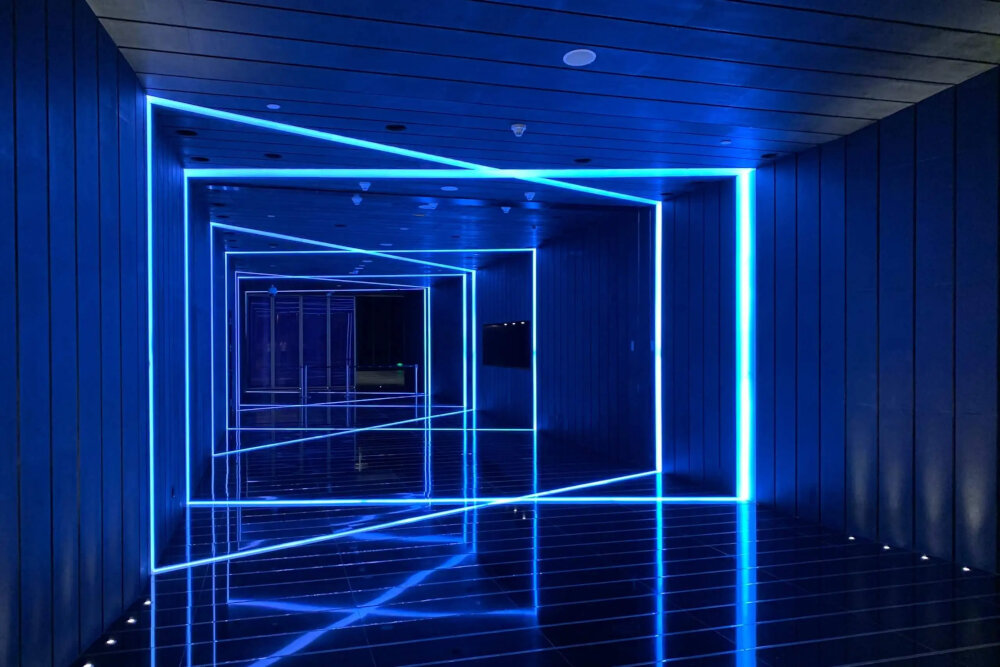
In conclusion, the color of the LED light you expose yourself to before sleeping can have a significant impact on the quality of your sleep. Research suggests that blue light can suppress melatonin production and disrupt your sleep cycle, while warmer colors like red, orange, and yellow can help you relax and fall asleep faster. It’s essential to be mindful of the lighting in your bedroom and choose warm, dim lighting at night to promote better sleep. By making small adjustments to your environment and habits, you can create a more conducive sleep environment and enjoy a restful night’s sleep. So, choose your LED light color wisely and say goodbye to restless nights!

